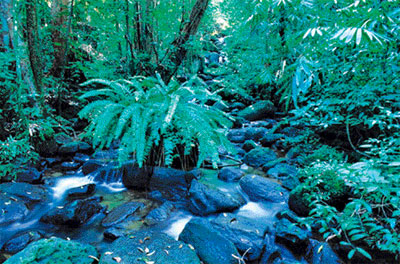|
Expanding a biodiversity hotspot

Many of you may have visited the world famous Sinharaja Forest
Reserve, which is a national park and a biodiversity hotspot in our
country. At a time Planet Earth is facing the threat of global warming,
it is important to protect and preserve such valuable forest cover. The
move by the Government to expand the existing forest area of this unique
biosphere is indeed laudable.
The Sinharaja Forest which is located in the Sabaragamuwa and
Southern Province is 88.64 km2 (34.22 sq mi) in extent at present and
comprises a wide range of fauna and flora, some of which is endemic to
our country. It was first established in April 1978 with the Department
of Forest Conservation as its governing body. Due to the rich diversity
of the fauna and flora found in the reserve this place was designated a
Biosphere Reserve and World heritage site by the United Nations
Educational Scientific and Cultural Organisation (UNESCO) in 1988 and
endorsed by an Act of Parliament. The forest range which consists of
11.187 hectares will now be expanded by another 2,488 hectares with the
aim of preventing state land being encroached, deforested or used for
commercial purposes.
 The
total land area to be added will comprise 12 blocks of land from the
Ratnapura District and four blocks of land from the Matara District,
presently under the Land Reforms Commission (LRC). This land will be
vested with the Department of Forest Conservation soon. The
total land area to be added will comprise 12 blocks of land from the
Ratnapura District and four blocks of land from the Matara District,
presently under the Land Reforms Commission (LRC). This land will be
vested with the Department of Forest Conservation soon.
Studies on the fauna of Sinharaja have revealed that there is a high
degree of endemism among the butterflies, fish, amphibians, reptiles,
birds and mammals.The most common deer species is the Sambhur.The Monk
deer and Barking deer are also found within the reserve. Leopards are
very seldom sighted, but their frequent presence has been confirmed by
tracks and other signs. Badger Mongoose and the Golden Palm Civet have
been occasionally sighted.
The most commonly seen primate is the Purple - faced Leaf Monkey.
The rare endemic birds to be seen in Sinharaja are the Red-faced
Malkoha, the Sri Lanka Blue Magpie, the Ashy-headed Barbbler, and the
White - headed Starling and the Green " billed Coucal the rarest of Sri
Lankan birds. The Agamids are the best represented group of reptiles,
the most common being the Green Garden Lizard. Among the snakes, the
Green Pit Viper and Hump-nosed Viper are commonly found in this forest
and are endemic to Sri Lanka. The amphibians are fairly well represented
in the reserve and nine endemic species have been identified.
The vegetation of Sinharaja may be described either as a tropical
lowland rain forest or tropical wet evergreen forest. some striking
characteristics of the forest are the loftiness of the dominant trees,
the straightness of their bole, the abundance of regeneration and the
diversity of species.
|

